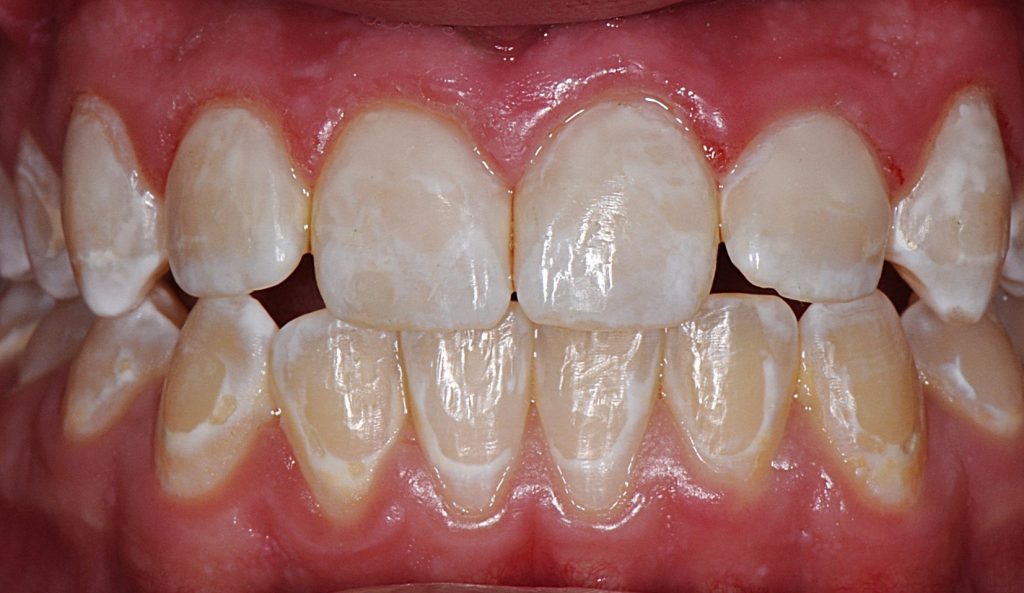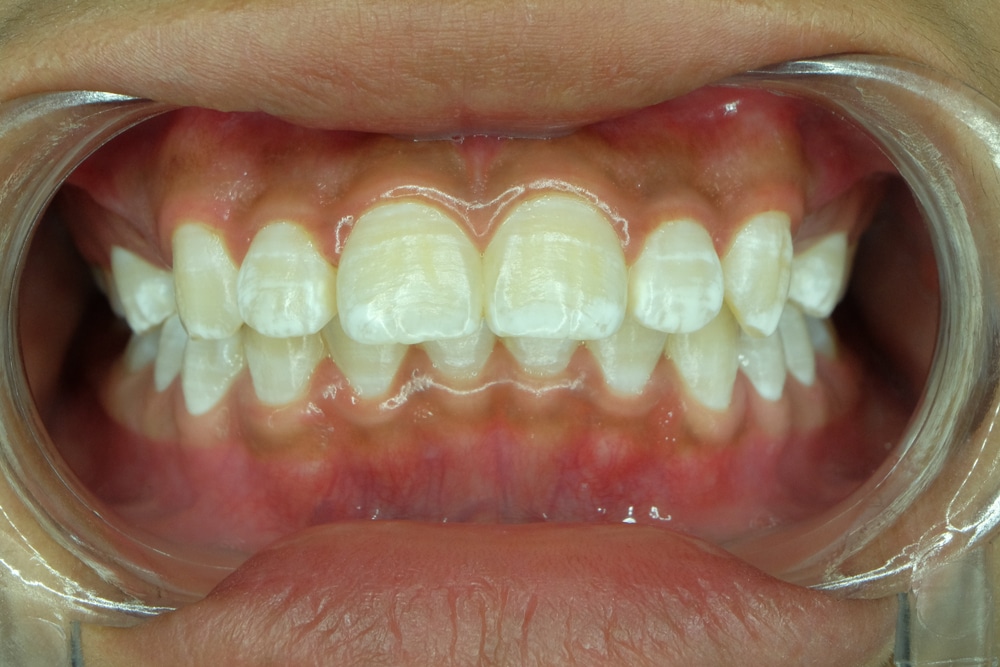Have you ever looked in the mirror and noticed chalky or bright white patches on your teeth, especially when you smile in natural light? These spots can seem minor at first, but are often quite noticeable, especially on the front teeth. You’re not alone in this experience. White spots on teeth are a widespread dental concern that can affect people of all ages, from young children to older adults.
While some white spots are harmless and purely related to cosmetic dentistry, others may be early signs of enamel damage or mineral loss, which can impact your long-term oral health. These spots can make you self-conscious about your smile and affect your confidence in social or professional situations.
In this comprehensive guide, you’ll learn about the common causes of white spots on teeth, effective treatment options, and practical prevention tips. Whether your goal is to remove existing spots or avoid them altogether, understanding the root of the problem is the first step toward maintaining a healthier, more radiant smile.
Understanding White Spots on Teeth: More Than a Cosmetic Issue
White spots, sometimes called white stains on teeth, are areas where minerals have been lost from the enamel surface. This is often due to enamel hypoplasia, a condition where enamel doesn’t form properly or loses its strength over time.
While white discoloration can appear subtle at first, it often worsens with age, wear, or poor oral habits. These white patches on teeth may also indicate early demineralization of the enamel, which, if left unaddressed, can progress into cavities or cause long-term damage to the tooth structure.
The key takeaway? White spots often reveal underlying enamel issues that you shouldn’t ignore, even if they seem harmless at first.
What Causes White Spots on Teeth?
Let’s break down the most common culprits:
1. Dental Fluorosis
In childhood, excessive fluoride intake can interfere with enamel development, causing white spots on front teeth in adults that remain for life unless treated. The uneven coloration might be a cosmetic concern, even though fluorosis is generally harmless.
2. Hypoplasia Teeth Enamel
Poor diet, high fevers, or trauma during tooth formation can all cause this enamel abnormality. In some cases, the enamel may not form completely, leading to brittle, pitted areas and white stains on teeth that don’t respond to whitening alone.
3. Poor Oral Hygiene and Demineralization
Plaque and bacteria release acids that erode enamel. This is especially common in patients who’ve worn braces or retainers. The result? White patches on teeth signal the beginning of enamel breakdown.
4. High-Acid or High-Sugar Diet
Frequent consumption of citrus fruits, soft drinks, or sugary snacks can lower your mouth’s pH. A more acidic oral environment strips minerals from your enamel, leading to dull, rough white stains on teeth over time.
5. Mouth Breathing
Dry mouth caused by breathing through the mouth (especially at night) reduces saliva flow. Saliva is essential for neutralizing acids and helping remineralize enamel. Without it, white spots on teeth can appear faster and more frequently.
6. Early Stage Tooth Decay
Before a cavity forms, you might see small chalky areas, an indication that bacteria have begun attacking the enamel. These can start as white spots on teeth before darkening if not treated.

How Do You Get Rid of White Spots on Teeth?
Wondering about the best way to remove white spots on teeth? The answer depends on the severity and cause. Luckily, modern dental techniques offer several effective solutions:
1. Remineralization Therapy
This involves applying fluoride, calcium, and phosphate products to your teeth to replenish lost minerals. Over time, these treatments can help rebuild weakened enamel and reduce the visibility of white stains on teeth.
- Professional fluoride varnishes
- MI Paste (recaldent) and other remineralizing agents
- Prescription toothpaste
Great for early-stage white patches on teeth, remineralization is non-invasive and dentist-recommended.
2. Teeth Whitening (With Caution)
Professional whitening can help even out the color of your enamel, though it’s not always a cure-all. Sometimes, white stains on teeth can appear more prominent after whitening, at least temporarily.
Kathy Jacobsen Contemporary Dentistry offers expert whitening services tailored to your specific enamel needs.
3. Icon Resin Infiltration
This revolutionary method involves filling porous enamel with a resin that visually blends the white spots on front teeth in adults with the surrounding tooth structure.
- Non-invasive
- No drilling or anesthesia required
- Often completed in one visit
This treatment is especially effective for post-braces discoloration or fluorosis spots.
4. Microabrasion
A safe procedure that uses an abrasive paste and acid to gently remove superficial white stains on teeth. The treatment smooths and polishes enamel, restoring a more uniform appearance.
It’s ideal when discoloration is only in the top layers of enamel.
5. Dental Bonding or Veneers
For deep-set or stubborn white patches on teeth, cosmetic bonding or porcelain veneers can be applied. These solutions cover the tooth surface entirely, offering immediate and long-lasting aesthetic improvement.
Kathy Jacobsen Contemporary Dentistry specializes in these treatments, giving patients dramatic smile makeovers with natural-looking results.
Case Example: Adult with White Spots After Braces
Let’s say you had braces as a teenager, but now as an adult, you’re left with white spots on your front teeth where brackets once sat. This is common and often due to plaque buildup around the braces. In such cases:
- Icon resin infiltration is highly effective
- Remineralization may help early on
- Professional cleaning can remove any surface debris
- Whitening can blend slight inconsistencies in shade
An evaluation at Kathy Jacobsen Contemporary Dentistry can help you create the right custom plan.
Prevention: How to Keep White Spots From Coming Back
Even the best way to remove white spots on teeth won’t matter if you don’t prevent them in the future. Here’s how:
1. Consistent Oral Hygiene
Brush your teeth with fluoride toothpaste twice a day, floss daily, and think about including a fluoride mouthwash for extra protection. Regular dental cleanings are also essential.
2. Use Fluoride Wisely
Fluoride is vital for enamel strength, but moderation is key, especially for children. Speak with your dentist about the proper fluoride balance for your family.
3. Watch Your Diet
Cut down on soda, processed snacks, and citrus-heavy foods. Add calcium-rich and mineral-packed items like leafy greens, almonds, and dairy.
4. Stay Hydrated
Water supports saliva production, which protects your enamel and prevents acid buildup.
5. Monitor for Enamel Deficiencies
If you or your child experiences frequent enamel issues, your dentist may recommend supplements or dietary changes to combat hypoplasia teeth enamel and mineral loss.
For Our U.S. Readers: Don’t Let White Spots Define Your Smile
In the USA, oral appearance is tied closely to professional and social confidence. Studies show that Americans value a bright, even smile, and white spots on teeth can disrupt that.
Your smile makes a lasting impression, whether you’re meeting potential employers or reconnecting with family. Don’t let discoloration hold you back.
That’s why more patients across the United States are turning to Kathy Jacobsen Contemporary Dentistry, where we treat your smile like it’s one of a kind.
Final Thoughts: Say Goodbye to White Spots for Good
White discoloration doesn’t have to be a lifelong issue. By understanding what causes white stains on teeth and exploring your treatment options, you can take confident steps toward a healthier, more beautiful smile.
Whether it’s fluoride-related, the result of poor hygiene, or linked to hypoplasia teeth enamel, some solutions work, and we are here to help you find the right one.
Don’t wait, schedule your consultation today with Kathy Jacobsen Contemporary Dentistry and take the first step toward restoring your smile.
Frequently Asked Questions
What causes white spots to appear on my teeth?
White spots are often caused by enamel demineralization, dental fluorosis, poor oral hygiene (especially with braces), or developmental issues like enamel hypoplasia.
Are white spots on teeth permanent?
Not always. Some can be reversed with remineralization therapy or improved hygiene, while others may require cosmetic treatments like resin infiltration or veneers.
Can teeth whitening remove white spots?
Although teeth whitening can occasionally make white spots more noticeable, it may also even out the color of your teeth overall. Depending on your unique enamel condition, a dentist might suggest the optimal whitening method.
What’s the best treatment for white spots on teeth?
Treatment depends on the cause. Options include remineralizing agents, Icon resin infiltration, microabrasion, bonding, or veneers. A dentist can evaluate and recommend the most effective solution.
How can I stop the recurrence of white spots?
Maintain excellent oral hygiene, avoid excessive fluoride (especially in kids), eat a tooth-friendly diet, and stay hydrated. Regular dental visits are key for early detection and prevention.



